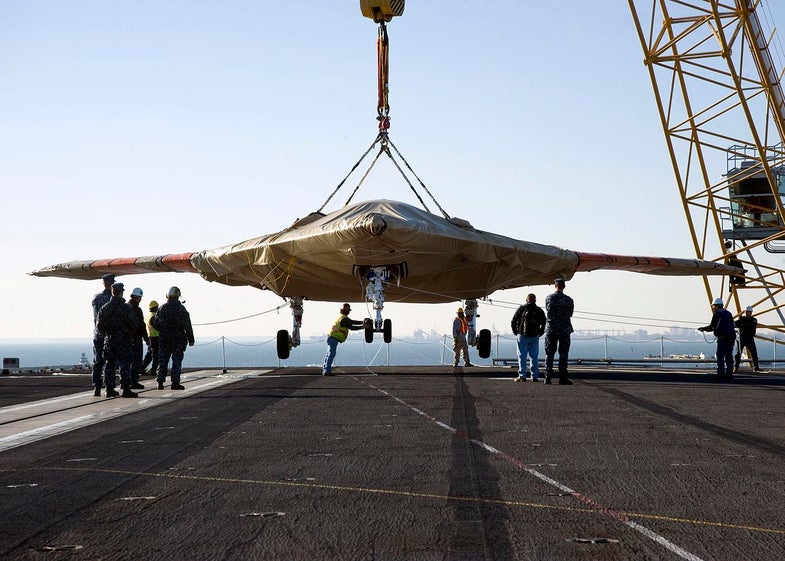How The Next Generation Of Drones Could Reshape Future War
Modern drones, meanwhile, aren't changing modern wars that much

We are living in the first age of drone warfare. While unmanned aerial vehicles can trace their origins back at least as far as 1918, it took the War on Terror and its accompanying technological advances to truly showcase the abilities of long-endurance, high-flying remotely piloted machines. Yet despite their prominence in modern battlefields, the greatest impact of drones will be felt in the future. At least, that’s the argument from Michael C. Horowitz, Sarah E. Kreps, and Matthew Fuhrmann in an interesting new paper.
In “The Consequences of Drone Proliferation: Separating Fact from Fiction,” published online this week, the authors speak to fears, both real and imagined, about more and more countries incorporating armed drones into their military arsenals. While the United States is the best-known user of armed drones, it’s hardly the only country, with Israel, Nigeria, Pakistan, and the United Kingdom having all used them in combat. The paper makes this key points: right now, drones are mostly changing the calculus for counter-insurgency and domestic warfare, but in the future, drones might change wars fought by nations against other nations.
So what happens when drones get better at avoiding anti-air weapons? That’s when drones start to matter a lot more between nations. Stealth technology, which made its wartime debut 25 years ago on American F-117 Nighthawk fighters in Desert Storm, is a likely future of both manned and unmanned combat planes. America’s newest bomber and its in the works replacement are both built stealthy, as are its biggest fighter program ever and the futuristic X-47B combat demonstrator.
Stealth is one factor that will make future drones fundamentally different than the drones of today. Horowitz et al. note China’s developments in this area, saying “China is currently pursuing the development of a stealth drone, reportedly named the Sharp Sword, and it has already undergone initial flight testing. The Sharp Sword would not only have a larger weapons bay than China’s CH-4 or Wing Loong, it would also have low observability characteristics that could make it harder for Western radars to detect.”
The U.S. Navy’s successor drone to its X-47B unmanned demonstrator will have many of this same characteristics. Smarter, stealthier drones are a likely part of future wars. But stealth isn’t the only way for drones to change the calculus of war in the future. From the paper:
One reason stealth is attractive for aircraft is that it does more to keep pilots safe against modern air defenses. Without a pilot in the plane to protect, another approach to anti-air weapons becomes viable: simply overwhelm the defenses with cheap swarms of disposable drones. Both the U.S. Air Force and DARPA are researching cheap deadly drone swarms for the future that could take out both ground weapons and enemy airplanes.
Someday, cheap and deadly or stealthy and autonomous drones may reshape the balance of power between nations, but until then, the authors argue, it’s best to focus on the impact drones will have in irregular war. The dawn of the robot warriors is still in the future.
